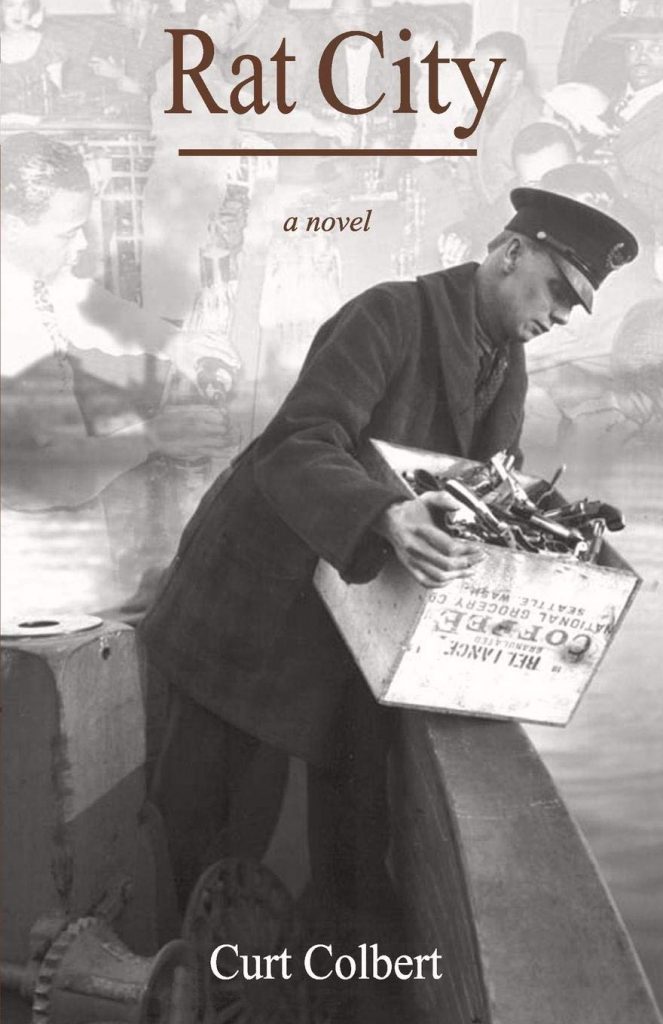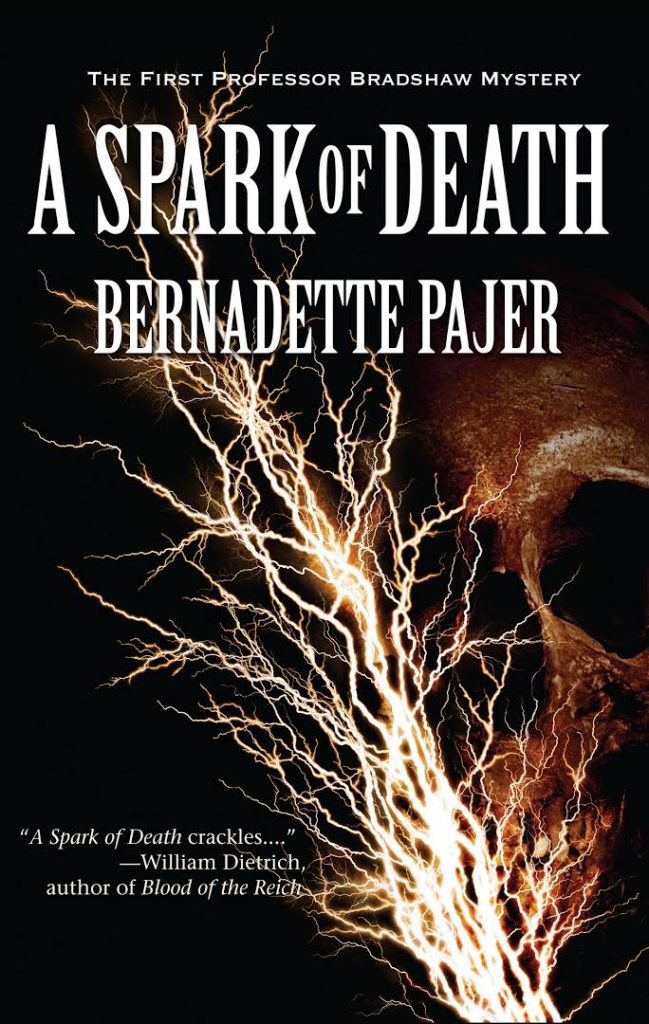Seattle may currently enjoy an enviable reputation as a laid-back, peaceful, and determinedly nice-to-your-neighbor sort of place. But it wasn’t always so.
Over the almost 170 years since the first schooner full of white Midwestern settlers arrived on these shores (in a downpour, naturally), criminality of all sorts and severities has plagued this increasingly caffeinated “Emerald City.” Vigilante killings. Bank robberies. Police corruption. Corporate embezzlements. They all feature prominently on the burg’s timeline. So do political assassinations, holdup-related massacres, and even the headline-grabbing scandal involving a paroled thief who married an older heiress, then drugged her and tried to conceal her body in a steamer trunk at the bottom of a bay—only to have that luggage float to the surface, for all the cops to see. Let’s not forget, either, that Seattle gave us two of the nation’s most iniquitous serial slayers: Ted Bundy and Gary Ridgway, aka the Green River Killer.
Ever since I moved to Washington state’s foremost metropolis in the mid-1980s, I’ve been expecting it to become a major breeding ground of distinctive crime fiction, inspired both by the area’s nefarious past and its go-go, high-tech present. That hasn’t really happened. So far. Sure, the genre has put down firm roots here. Authors such as G.M. Ford, Jennifer Hillier, Curt Colbert, Kat Richardson (with her paranormal series about private investigator Harper Blaine), and Glen Erik Hamilton (who builds action-oriented thrillers around thief-turned-Army Ranger Van Shaw) all continue to employ Seattle as a storytelling backdrop. Others, though, have come and gone, to be remembered chiefly by reviewers and the librarians charged with dusting their novels. And arguably the most-familiar “whodunit” synonymous with Seattle, David Guterson’s Snow Falling on Cedars (1994), doesn’t even take place in this city, but instead on a fictional island in the northern reaches of adjacent Puget Sound.
For readers (and, dare I hope, aspiring local wordsmiths?) who still need convincing of Seattle’s potential as an ideal milieu for crime fiction, here are 10 novels that have already defined the field’s development and diversity.

Just Around the Coroner by Stuart Brock (1948)
This playfully titled hard-boiled work may well be the first published private eye novel set in Seattle—although, save for scanty mentions of the Sound and the far-off Olympic Mountains, its story could have taken place in any American municipality. Which represents a lost opportunity, because the author actually hailed from here. “Stuart Brock” was a pseudonym used by Louis Trimble (1917-1988), a prolific crafter of science fiction, crime fiction, and westerns, who reportedly began selling short stories in 1938, and subsequently taught humanities and social studies here at the University of Washington (UW).
Just Around the Coroner marks the sole outing for gumshoe Peter Cory, an urbane former “tennis tramp” who’s currently a top operative for Boldman Investigations. Trimble’s tale sends Cory to probe a spate of jewelry thefts at a “swank” downtown hotel run by a rumrunner turned restaurateur and a pair of sharpie brothers, Paul and Nick Cotten, with whom Cory has a problematic past. Almost immediately, the P.I. is distracted by the histrionic departure of a hotel guest who has deliberately aged her looks…and by the fatal stabbing of Nick Cotten. Among the possible suspects in Cotton’s passing: Cory’s hot-tempered, money-hungry girlfriend, Terry James, who operates a gift shop on the premises and just happens to be in possession of the murder weapon. Cory “lost his conscience a long time ago,” as he contends; yet even he may find it difficult to protect Terry, while simultaneously fending off the amatory advances of Paul Cotten’s wife, unraveling a racket in fake antiques, and…oh, yeah, whatever became of those stolen sparklers? There’s plenty of dexterous backstabbing in this narrative, and little honor among its profuse thieves. The 1949 paperback edition (shown above) was part of Dell Books’ famous “mapbacks” line. Trimble later penned another standalone Seattle shamus yarn, Killer’s Choice (1956), that one starring “tough-but-tender” Bert Norden.

30 for a Harry by Richard Hoyt (1981)
John Denson got his start in 1980, smack dab in the middle of America’s “new regionalism” period in detective fiction, when this genre welcomed an increasing number of sleuths operating in distant enclaves of the country. No Philip Marlowe or Lew Archer, he was instead described as a “randy flake, honest, intelligent, an eater of raw cauliflower, a drinker of cheap red wine, a bit of a cynic, a romantic.” Like his creator, Richard Hoyt, Denson was also once a newspaper reporter—a credential of benefit in this second series installment (after Decoys), when the P.I. hires on at the city desk of a family-owned daily broadsheet, the Seattle Star, hoping to flush out a “Harry”: a journalist who’s using inside information for extortion purposes. The paper’s managers worry such a scandal might further undermine their company’s already wobbly finances, and leave the Star vulnerable to a takeover. Yet Denson has barely started his indagation of the likely shakedown artist here when that man is shot to death. Soliciting aid from a savvy young blonde scribe and the paper’s tyrannical, fiercely honest city editor, Denson soon uncovers a felonious scheme much broader than blackmail, involving call girls, ambitious lawmakers and a grasping British media baron, and stretching all the way from the Pacific Northwest to Japan.
Hoyt skillfully immerses readers in the newspaper world during an era when computers were replacing typewriters, and corporate consolidation had emerged as a serious menace to earnest, independent journalism. His man Denson can be immature and occasionally too lucky in his guesswork, but he’s fiercely loyal to people who need his help. Sadly, Hoyt concocted only a few of these witty tales before moving Denson south to Oregon, and then ending the series at nine books.

The Portland Laughter by Earl Emerson (1994)
Neither Trimble nor Hoyt did much to familiarize readers with the singular heritage and characteristics of Seattle. The same cannot be said of Emerson. Over the course now of 15 novels (beginning with 1985’s The Rainy City), his snoop-for-hire, Thomas Black, has explored most of this town’s corners, from historic Pioneer Square (where he maintains an office) and Queen Anne Hill to the scenic Washington Park Arboretum, the racially diverse Central District, the quirky Fremont neighborhood (which proclaims itself “The Center of the Universe”), and the fast-growing suburbs east of Lake Washington that still remain terra incognita to so many Seattleites. Black really gets around, partly because he’s an avid bicyclist. He is also a teetotaler and an erstwhile member of the Seattle Police Department (SPD).
In his seventh adventure, The Portland Laugher, Black is having “woman trouble.” Kathy Birchfield, the playfully alluring lawyer who rents a basement apartment in his University District bungalow, and with whom he’s fallen in love, has decided to wed someone else instead: Philip Bacon, a supercilious elementary school teacher. So our hero is pleased when middle-aged vamp Roxanne Lake offers to pay him for tailing Kathy’s fiancé. Lake claims Bacon is harassing her foster son, freshly released convict Billy Battle. The two men knew each other in childhood, and Bacon later testified against Battle in court. Now Lake worries that Bacon intends Battle harm—a fear seemingly confirmed by the educator’s purchase of a gun. Amid his unearthing of his rival’s past indiscretions, Black is taunted by peculiar phone calls from someone who may be linked not only to the current case, but to the years-ago disappearance of a teenage girl and the demise of Lake’s last spouse. Darker-edged than most Thomas Black stories, The Portland Laugher still boasts the wiseacre comments and tight plotting for which this series is known.

We Interrupt This Broadcast by K.K. Beck (1997)
Kathrine “K.K.” Beck is the widow of Michael Dibdin, British-born author of the Aurelio Zen mysteries. She’s best recognized for her novels spotlighting Seattle lounge singer and private detective Jane da Silva (Cold Smoked), but this is one of her standalones. It tunes readers in to the manifold woes at KLEG, Seattle’s last remaining classical AM radio broadcaster, which its wealthy co-owner, Franklin Payne, calls “a money-sucking pit that served the community only as employer of last resort for a lot of pretentious geeks.” He’d sell out pronto, were it not for his sister, Caroline, the repeatedly marrying station manager, who adjudges KLEG a cultural cornerstone. However, the murder of slick sales manager Ed Costello—found folded neatly into the office Hide-A-Bed—may be one disaster too many for both siblings, especially after it’s learned he was running an escort service on the side. Restoring even a modicum of order to this comic chaos will depend on the undependable snooping skills of Alice Jordan, who, after recently losing her husband to his dental hygienist, really needs her new job selling advertising for KLEG. A past-his-prime Lothario disc jockey, a program director determined never to relinquish his vinyl LPs, a seductive late-shift announcer (“Teresa, Queen of the Night”) who nobody at the station has ever seen, and a paranoid survivalist all complicate Jordan’s efforts to solve Costello’s slaying and keep her station on the air. In between Beck’s sarcastic humor and her plot’s over-the-top antics, she’s crafted a solid whodunit that rests on twisted connections between her eccentric players.

Last Ditch by G.M. Ford (1999)
Leo Waterman has spent his life in the shadow of his father, William H. “Wild Bill” Waterman, a labor organizer who “parlayed his local notoriety into eleven terms on the Seattle City Council,” as author Ford wrote in his debut novel, Who in Hell is Wanda Fuca? (1995). Even in Last Ditch, this series’ fifth entry, Waterman fils is still coming to terms with what his progenitor did and didn’t do for him, while he scratches out a modest living as a peeper, waiting for his inheritance to kick in on his 45th birthday. The only portion of Leo’s trust fund he can access in advance of that is his parents’ 12-room Tudor manse. And it’s there that he has recently settled with his lover and childhood friend, forensic technician Rebecca Duvall—there, too, where the trouble in Last Ditch begins.
Leo enlists “the Boys”—his ragtag band of homeless, sobriety-challenged Irregulars—to help him spruce up the grounds around his new abode. As they raze a small greenhouse, though, they stumble across the skeleton of Peerless Price, an archconservative newspaper columnist who went inexplicably missing in 1969, amid a heavily publicized feud with the more liberal Bill Waterman. After years of splenetic attacks, could Wild Bill finally have shot his nemesis, then planted him among his wife’s begonias? Despite his own issues with Wild Bill, Leo feels obliged to protect his pater’s memory, and investigates Peerless’ demise himself—a pursuit that soon finds him battling scandal-hungry reporters and jousting with his smug uncle Patrick (who avers that to deny the councilman’s culpability “merely prolongs the agony”), yet ultimately leaves Leo with a more compassionate understanding of the man who brought him up. Ford specializes in clever dialogue, unforeseen twists, and the milking of humor from sacred cows, all of which are found in these pages.

Rat City by Curt Colbert (2001)
More than half a century after Just Around the Coroner hit spinner racks, Rat City swept readers right back into post-World War II Seattle, a place author Colbert pictures as considerably more blue-collar and corrupt than today’s tourist mecca. His protagonist is Jake Rossiter, who escaped his orphanage as a teenager, later won plaudits as a Marine Corps volunteer and boxer, and is now a tough but not uncouth shamus, with an office in the Denny Regrade neighborhood, a brand-new 1947 Buick Roadmaster, and an ostensibly demure, 24-year-old “girl Friday,” Miss Barbara Jenkins, who aspires to a sleuthing career herself, and has already found her way around a loaded automatic. Which is fortunate, because there’s plenty of gunplay in this quick-stepping yarn.
It begins on page one, when Rossiter blows a hole in a “prime-size palooka,” Edward “Big Ed” Teller, who had barged into his place of business, gun a-blazin’. Rossiter has no clue why Big Ed wanted him tucked under a tombstone; all he can get out of the expiring bookie is a name: Gloria. When, shortly thereafter, somebody in a Hudson sedan tries to flatten him, only to likewise croak with “Gloria” on his lips, the P.I. becomes still more curious. Rossiter’s inquisitiveness, however, lands him in hot water with thugs on both sides of the law. Meanwhile, all of this drama has distracted him another paying assignment: his search for a young, black jazz saxophonist who vanished on his way home from work. So he’s staggered by news that the teenager has been gunned down and burned beyond recognition. Kept upright by copious servings of Scotch and fistfuls of aspirin, plus Miss Jenkins’ periodic ministrations, Rossiter eventually ties his two inquiries together on a path that leads him to a mental asylum. Colbert uses hard-boiled slang more liberally than did most crime fictionists working in the ’40s, but the amusing relationship between Rossiter and the lovely Miss Jenkins is thoroughly modern and delightful. There are already two sequels to Rat City, Sayonaraville (2003) and Queer Street (2004), with a fourth, Nowhere Town, on its way.

Shades of Justice by Fredrick Huebner (2001)
Lawyer-author Huebner, who passed away late last year, plotted five novels around Seattle investigating attorney Matt Riordan, among them 1988’s Edgar-nominated Judgment by Fire. Shades of Justice is his single standalone. In it, forensic psychiatrist Dr. Will Hatton struggles to win the release of a childhood friend and renowned painter, Laura Arcand, who was found unconscious on a Bainbridge Island beach beside the gunshot corpse of her husband, Mark Talbot. She doesn’t recall plugging Talbot, but her later outburst in a hospital—“I killed them! Oh, God, both of them!”—weighs heavily against her. Where, though, is the murder weapon? And why did Laura allude to having done in two people? Digging for answers, Hatton learns about a long-ago assault on Laura, which happened at the same beach where she and her late hubby were found. Only by exposing the details of that earlier incident—and dodging myriad ethical dilemmas along the way—can Hatton solve the present-day killing.

Deadline Man by Jon Talton (2010)
Talton spent 37 years on the payrolls of daily newspapers, including The Seattle Times, so it’s no shock that one of his mysteries stars a reporter-detective. Deadline Man is a carefully paced, geopolitical conspiracy novel headlined by “The Columnist,” an otherwise unnamed business writer for the fictional Seattle Free Press. Early on, this journalist is surprised when a local hedge-fund manager he’s interviewing asks, cryptically, what he knows about “eleven-eleven.” Nothing is the answer. But after his source executes a 20-story dive to his death, the reporter begins the “sniff work” necessary to educate himself. He slowly connects puzzle pieces involving a pretty Seattle teen, a shady defense contractor, a private prison complex, a succession of slayings, and…well, let’s just say this is one hell of a complicated, often incredible pursuit of the sort that could land The Columnist in Pulitzer circles, or else a pine box.

A Spark of Death by Bernadette Pajer (2011)
Pajer has thus far delivered four assiduously researched historical mysteries starring Benjamin Bradshaw, a UW electrical engineering professor. The first, A Spark of Death, takes place in 1901, at a time when Seattle was fast outgrowing its frontier roots, thanks to successive gold rushes in the Canadian Klondike and Alaska. It imagines Bradshaw having to clear himself of suspicion in a homicide. Fellow educator Wesley Oglethorpe has been electrocuted in convoluted fashion, and Bradshaw not only disliked that gent, but knew how to make such a fatal frying appear unintentional. As part of his defense, the inordinately perspicacious prof must ascertain who else had a motive—his wife, perhaps, or his abused students?—and whether this crime is linked to President William McKinley’s upcoming swing through the Pacific Northwest.

Jar of Hearts by Jennifer Hillier (2018)
Sixteen-year-old Georgina “Geo” Shaw, her cheerleading friend Angela Wong, and Kaiser Brody were all nearly inseparable in high school—until handsome, older Calvin James took an inordinate interest in Geo, rather than the comelier Angela. Then Angela suddenly disappeared. Another 14 years pass before the girl’s dismembered remains are discovered, secreted in woods adjacent to a suburban home owned by Geo, who is now a ladder-rung-leaping executive at a Seattle pharmaceutical company. Blame for that butchery falls principally on Calvin James, lately notorious as the “Sweetbay Strangler.” However, Geo’s role in disposing of Angela’s body so long ago earns her prison time, as well as the suspicions of the police detective responsible for finally bringing James to justice: her former schoolmate, Kaiser Brody. When additional corpses turn up in those same woods, carrying messages that seem to further incriminate Geo, questions arise as to Brody’s ability to remain objective in this case, and whether the truth behind Angela becoming the Strangler’s first victim will ever be realized. Hillier’s focus on the insecurities, broken lives, and talents for manipulation among her main characters adds significant depth to this psychological thriller.
* * *
This is by no means a comprehensive survey of Emerald City crime, mystery, and thriller fiction. I haven’t yet mentioned, for instance, Robert Dugoni’s series starring SPD detective Tracy Crosswhite (A Cold Trail), or Ridley Pearson’s novels led by homicide cop Lou Boldt and psychologist Daphne Matthews (The Body of David Hayes). Nor have I referenced J.A. Jance’s 23 books about J.P. “Beau” Beaumont, a once hard-drinking and now more-or-less retired police detective (Proof of Life). Deserving of notice, too, are four works credited to “Anne Argula” (the pen name of author-screenwriter Darryl Ponicsan), featuring an acerbic, menopausal ex-copper turned Seattle P.I. known only as Quinn (Walla Walla Suite).
Two Seattle-set standalones worth finding are Indian Killer, by Sherman Alexie, which builds around a Native American serial murderer executing white men in twisted retribution for the historical injustices committed against his people, and A Man’s Game, a suspenseful woman-stalker yarn by Cutter and Bone author Newton Thornburg (who moved to Seattle in 1980). I would be remiss here were I not to draw your attention to T.W. Emory’s post-World War II mysteries (Trouble in Rooster Paradise, Crazy Rhythm) showcasing aging gumshoe Gunnar Nilson, and Lowen Clausen’s Seattle Police Trilogy (First Avenue, Second Watch, and Third & Forever). And should your tastes run more toward the cozy side of crime, keep the names Mary Daheim (A Case of Bier), Leslie Budewitz (Chai Another Day), and Tracy Weber (Murder Likes It Hot) in mind the next time you visit a bookshop.
To date, I haven’t come across any novel about a Seattle ne’er-do-well deep-sixing his heiress spouse in a steamer trunk. But give it time. This town still has ample room to grow in the field of mystery making.

















